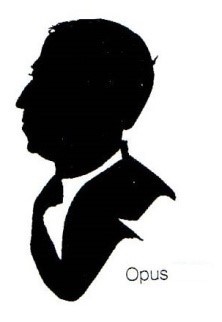2025 | Volume 26 | Issue 2

Author: Associate Professor Felix Behan AM
I was watching the Antique Roadshow (ARS) recently during this somnolent phase of my surgical career—when most of us spend our time cooking, eating and watching documentaries—capturing vignettes of history, even rotating around coffee parlours and golf courses.
ARS covers many topics of collector’s interest—leech jars to Alexander the Great statues. One accompanying story could reveal that Alexander’s father, the King of Macedonia, enticed Aristotle, the Greek philosopher to tutor his son—and look how he ended up—capturing Persia.

A/Prof Sofija Pejkova with collage in the background
North Macedonia has come across my acquaintance recently thanks to Dr Eldon Mah, a plastic and reconstructive surgeon, who introduced me to Associate Professor Sofija Pejkova, a plastic surgeon from there. She was full of praise about the Keystone concept and its usefulness in reconstructive surgery where even the trainees could manage it, especially during the COVID-19 restrictions. The weekly plastic surgical meeting even contains a collage of their surgical exploits—all Keystoned.
Hemingway once said, “The word retirement should be removed from the dictionary”, and I can understand why because my life is fully committed still. And, if I did not have the wit to convey historic pearls, my life would be boring.
On another ARS a white porcelain leech jar was displayed with airholes with the presenter giving a synopsis of the medical use of bloodletting.

Storage jar with air holes
Dr David Kaufman, an ophthalmologist, gave me a reference to a friend whose father was a chemist in the 1930s and the universal treatment for a black eye then was to apply a leech for a penny a pop.
In a website article in the Royal College of Surgeons of England Susan Isaac shares the usefulness of leeches titled Why you should love a leech: bloodletting in microsurgery. The author says the leech can consume 5-10ml of blood at each sitting and they have three jaws and 100 teeth. Their saliva contains hyaluronidase, likened to Heparin, which is why the wounds keep oozing, as I experienced during my cadet days of camping.

Engorged leech resting on palm with its 5-10ml of blood
For all my fingertip replants, I used fenestrations and covered them with saline-soaked, heparinised gauze—a universally successful technique, especially when leeches were unavailable.
This approach ensured effective blood flow and graft survival. I applied the same principle in nasal reconstruction, using the helix of the ear as a fenestrated composite graft to reconstruct an alar rim. The key to success was the fenestrations, combined with regular changes of the heparinised gauze, which maintained perfusion and optimised healing. A series of six cases were all successful—a simpler alternative to major microsurgical procedures.

Barber's pole
Historically the barber surgeons had the sharpest knives and the patients would go to the gutters and the barber would let out the blood and allow it to drain externally. Hence, the origin of the red, white and blue poles (imaged), which still exist today, and the image of my barber shop in Carlton has a very nice illustration. My barber is an Arab and when I saw him last month with the day temperature of 38° he kindly offered me some Arab hospitality and a bottle of cold water.
The meaning of the word ‘leech’ means to suck or draw out, so I tapped into the experience of Professors Wayne Morrison and Ian Taylor about their leech experiences for engorged flaps with venous distention. Leeches were not universally available.
Wayne had a story of the late Bernard O’Brien’s observation from his international meetings on the usefulness of leeches but none were available in Melbourne, even at the zoo. Wayne put it out on the airwaves and a farmer from Gippsland threw a sheep’s carcass on the lake to be covered in leeches the following day—problem solved.
The Canniesburn Plastic Surgical Unit under Ian MacGregor made a statement that we have all respected that more flaps die from venous engorgement than vascular insufficiency—analogous to a blocked toilet.
In the early part of my career doing the standard Wolfe graft and tie over dressing for nasal repairs, the proflavine wool was standard practice. On one occasion my patient inadvertently knocked off the tie over the dressing while sleeping and on review the following day it was fully vascularised. So, as a precautionary manoeuvre I put holes in the graft for drainage, calling it a ‘holy graft’ done at the Bethlehem Hospital. Over time, the split skin grafts were modified by adding small openings, which led to the development of mesh grafts—a technique credited to
Dr. Otto Lanz in 1907. This ‘tennis net’ pattern became widely used and was highly successful, often achieving full graft take, now universally applied to all split skin grafts.
My late neighbour in Parkville, Dr John Hueston, who had the largest plastic surgical practice in Australia, working 24/7 through the year, was the oracle of Delphos in all plastic surgical matters. I asked his advice for an alternative name for a ‘holy graft’ and he just raised his hands, looked at his surgery windows and said, “Son the French have the word for window—la fenetre—and the Vikings had a similar sounding word for letting light in and air out.”
I quote the late Stephen Hawking, the brilliant astrophysicist, who when asked about learning from history said, “If you do not learn from history, you are dumb” a phrase relevant in the present world climate. And another corollary is 'Never give up work. Work gives you meaning and purpose and life is empty without it’.